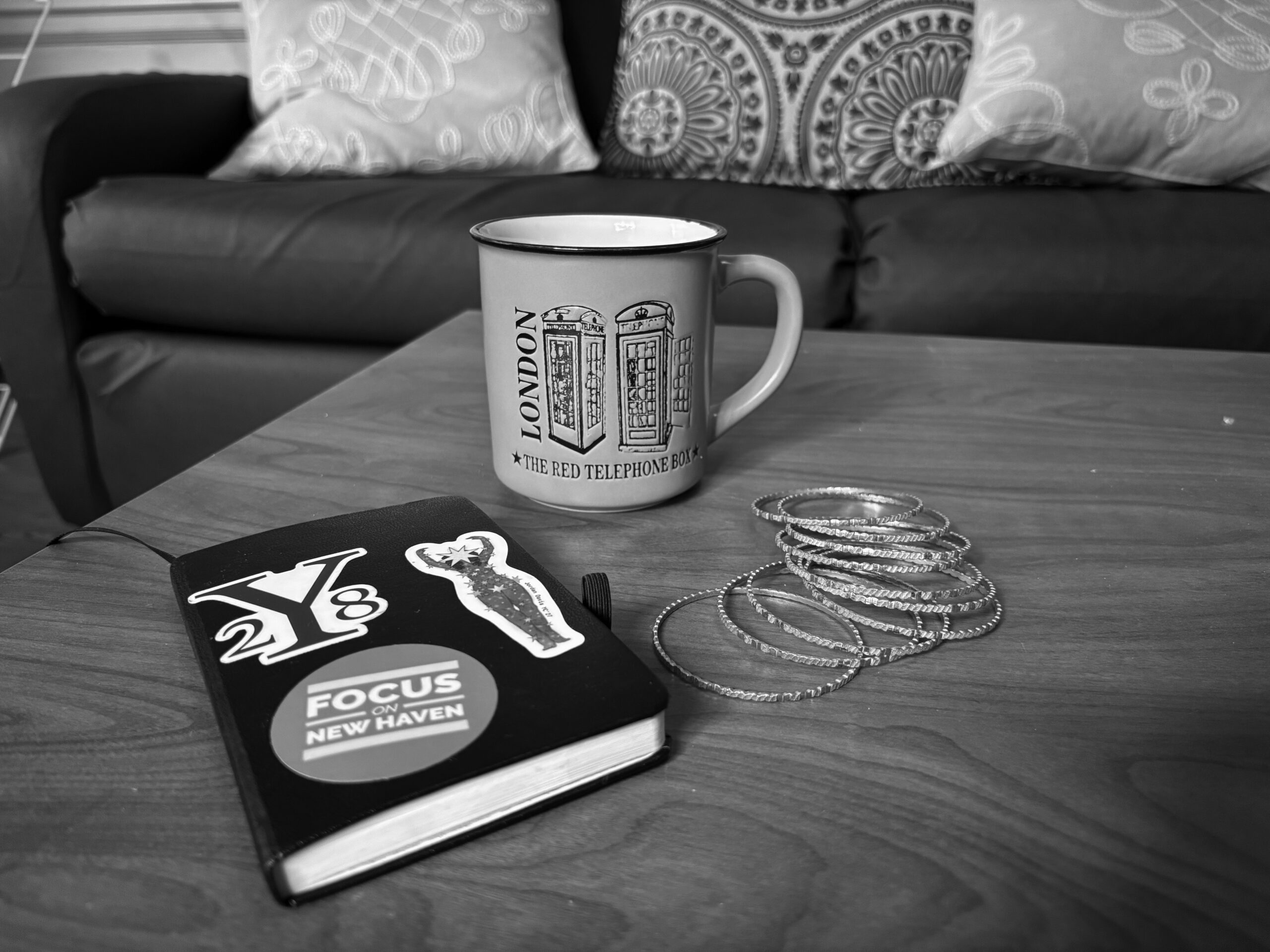
On my cluttered desk sit three things that have followed me across semesters, dorm rooms and different versions of myself: a journal, a set of gold bangles and a cup I bought in London this summer. None of them are worth much on their own, but together they form a small archive of who I’ve been trying to become.
My journal is a contradiction. It contains both versions of myself that are long gone yet it is still unfinished itself. Half finished and half full. The cover is soft from being packed and unpacked too many times, the edges bent from being jammed into overstuffed tote bags. I started writing in it last winter break, inspired by a friend’s goal to journal every day. I was determined to write everything that ever mattered. I thought that I would write everyday, that documenting would keep me grounded, but instead the pages are uneven: a burst of messy handwriting one week, nothing for months after. Still, when I flip through it, the fragments feel enough — a line about a song I couldn’t stop listening to, a note about the way the city looked after rain, a few entries written in the middle of the night when I couldn’t sleep. It has become less of a record of what I did but more so what I felt in the moments I thought I’d forget myself.
The gold bangles were gifted to me by my mother. She gave them to me in pieces, one on my fifteenth birthday, another before I left for college, the rest tucked into a small tin box I still only rarely open. They’re delicate, thin enough to make a faint clinking sound whenever I move my wrist, a reminder that memory has a rhythm of its own. When I wear them, I’m reminded of her, of the way she would slip off her own set before washing dishes or praying, how they’d catch the light whenever she gestured mid-sentence. For her, they’re a form of both adornment and inheritance, a small form of self-preservation etched in gold. For me, they’ve become something quieter: proof of care, continuity and the kind of love that doesn’t need to be spoken aloud.
Then there’s the London mug, printed with the city telephone booths. I bought it impulsively this summer at a souvenir shop near a train station during my first trip abroad simply because I wanted to, not for school or family or any reason that needed explaining. I didn’t mean for it to mean anything, but now it’s one of the first things I unbox in a new room. Now, whenever I fill it with coffee, I think of those quiet mornings in London: the hum of buses outside, the pale light through the window, the feeling of being lost but certain I was where I was meant to be. The cup really isn’t elegant or sentimental in any way, but it’s ordinary in the best way. It’s a small reminder that meaning often hides in what we use every day without thinking.
Together, these items form a way to step outside of my own thinking and see who I’ve become. When I flip through the journal, I don’t only see myself, but I step into the third person. I see a girl furiously scribbling with no direction. When I see the bangles on my table, I think of what they’d be if they weren’t mine. How others would have treated them. Even without them being a part of who I am, innately they are beautiful and delicate in their own right. Maybe that’s why I bought the mug in London, even knowing that there were tens of other exact copies behind it on the shelf. It’s comforting to see how an inherently ordinary object like a mug has its own identity. That’s when they come to mean something to me, in the moments when I tap into the parts of myself that align with that identity.







